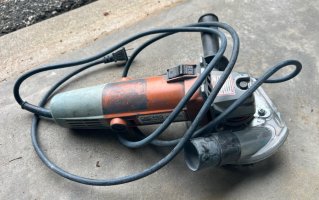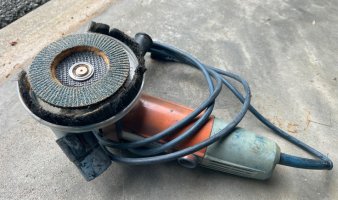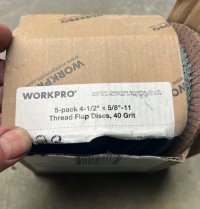windblown
Member III
I have yet to venture into the world of fiberglass repair, but I am considering glassing in two below-water thru-hulls next time the boat is pulled. I replaced a depth instrument with an Airmar DST-800 several years ago, when I added an NMEA-2000 backbone. The combined unit eliminated the need for the old speed transducer, but it's still in the hull. I'd like to pull it, and glass in that hole. I also have the old thru-hull under the head sink for an off-shore head discharge. It was disconnected from the head plumbing years ago, but the big marelon valve is still there, plugged with what I believe is a PVC fitting. I'd like to pull the thru-hull and glass it in. In both cases, there isn't an urgency to do this, but it seems to make sense to eliminate the risk of any kind of future failure. . .
I've read lots of posts and videos, but I still have a couple of questions before undertaking this DIY project below the waterline. 1. Am I crazy to try this as my first glass project? I'm pretty handy, and I follow directions well, but is this a risk I shouldn't take? 2. After glassing in these two holes, what kind of gel coat/barrier coat should I plan to add? I'm in the Great Lakes, so the boat is in fresh water from May - October. Like most sailors in our area, we use VC-17 for bottom paint, with a fresh (thin) coat each spring. From the records that I have, the hull had a full Interlux barrier coat applied maybe twenty years ago. The bottom is in good shape.
All input is welcome.
Thanks,
Deborah
I've read lots of posts and videos, but I still have a couple of questions before undertaking this DIY project below the waterline. 1. Am I crazy to try this as my first glass project? I'm pretty handy, and I follow directions well, but is this a risk I shouldn't take? 2. After glassing in these two holes, what kind of gel coat/barrier coat should I plan to add? I'm in the Great Lakes, so the boat is in fresh water from May - October. Like most sailors in our area, we use VC-17 for bottom paint, with a fresh (thin) coat each spring. From the records that I have, the hull had a full Interlux barrier coat applied maybe twenty years ago. The bottom is in good shape.
All input is welcome.
Thanks,
Deborah




